Human migration is a fundamental aspect of our history, shaping the diversity of cultures, languages, and genetic landscapes across the globe. For millennia, humans have embarked on journeys across continents, driven by factors such as environmental changes, resource availability, conflict, and exploration. Today, advancements in genetics and DNA analysis have provided unprecedented insights into the genetic signatures of human migration, allowing us to trace ancestral origins and reconstruct the migratory routes of our ancestors. In this article, we will explore the genetics of human migration, the techniques used to study ancestral origins through DNA analysis, and the fascinating discoveries that have emerged from this field of research.
Understanding Human Migration Patterns:
The story of human migration is a complex tapestry woven over thousands of years, with populations dispersing, intermingling, and adapting to new environments. From the earliest migrations out of Africa to the colonization of distant continents, humans have embarked on epic journeys that have left indelible marks on our genetic heritage.
1. Out of Africa: Genetic studies have provided compelling evidence that all modern humans share a common African ancestry, with the continent serving as the cradle of humanity. Analysis of mitochondrial DNA (mtDNA), Y-chromosome DNA, and autosomal DNA has revealed patterns of genetic diversity that support the “Out of Africa” hypothesis, suggesting that anatomically modern humans originated in Africa and subsequently migrated to populate other regions of the world.
2. Colonization of Eurasia: After leaving Africa, early humans spread across Eurasia, following migratory routes that led them into diverse environments ranging from temperate forests to arctic tundra. Genetic studies have identified distinct population substructure within Eurasia, reflecting ancient migrations, admixture events, and selective pressures. For example, the peopling of Europe involved multiple waves of migration, including the arrival of hunter gatherers, farmers from the Near East, and pastoralists from the Pontic Caspian steppe.
3. Colonization of the Americas: The peopling of the Americas represents one of the most remarkable chapters in human migration history. Genetic evidence suggests that the indigenous peoples of the Americas are descended from populations that migrated from Asia across the Bering land bridge during the last Ice Age, approximately 15,000-20,000 years ago. DNA analysis has provided insights into the timing, routes, and genetic contributions of these early migrations, as well as the subsequent interactions between indigenous populations and European colonizers.
Techniques for Studying Ancestral Origins:
Advancements in DNA sequencing technologies and computational methods have revolutionized the field of genetic anthropology, enabling researchers to study ancestral origins with unprecedented resolution and accuracy. Several techniques are commonly used to trace migration patterns and infer population history from DNA data:
1. Mitochondrial DNA (mtDNA) Analysis: Mitochondrial DNA is maternally inherited and provides insights into maternal ancestry. By analyzing mtDNA sequences, researchers can trace the maternal lineages of individuals and reconstruct ancient migration routes. Mitochondrial haplogroups, defined by specific genetic variants, are used to classify maternal lineages into broad ancestral groups and infer migratory patterns.
2. Y-Chromosome DNA Analysis: The Y-chromosome is passed from father to son and can be used to trace paternal ancestry. Y-chromosome haplogroups, defined by specific genetic markers, are used to identify paternal lineages and infer migration routes. Y-chromosome analysis is particularly useful for studying population movements among male lineages and investigating the genetic legacy of historical events such as migrations, invasions, and conquests.
3. Autosomal DNA Analysis: Autosomal DNA, inherited from both parents, provides a comprehensive view of an individual’s genetic ancestry. By comparing patterns of genetic variation across populations, researchers can infer population history, admixture events, and genetic relationships between groups. Autosomal DNA analysis, combined with advanced statistical methods and computational algorithms, allows for the reconstruction of complex population histories and the identification of genetic signatures of migration and admixture.
4. Whole Genome Sequencing: Recent advancements in DNA sequencing technologies have made it possible to sequence entire human genomes with unprecedented speed and accuracy. Whole genome sequencing allows researchers to analyze the complete genetic makeup of individuals and populations, providing detailed insights into genetic diversity, population structure, and evolutionary history. By comparing whole genome sequences from diverse populations, researchers can reconstruct ancient migration routes, infer population admixture events, and identify genetic adaptations to local environments.
Software:
Sequence Alignment and Analysis Software: Tools such as BLAST (Basic Local Alignment Search Tool), Bowtie, and BWA (Burrows-Wheeler Aligner) are used to align DNA sequences against reference genomes and identify genetic variants, including single nucleotide polymorphisms (SNPs), insertions, deletions, and structural variations.
Population Genetics Software: Programs like PLINK, ADMIXTURE, and STRUCTURE are utilized to perform population genetics analyses, including principal component analysis (PCA), admixture analysis, and haplotype phasing. These tools help researchers infer population structure, identify genetic clusters, and detect patterns of admixture and migration.
Phylogenetic Analysis Software: Phylogenetic reconstruction software such as BEAST (Bayesian Evolutionary Analysis Sampling Trees), PhyML, and RAxML are employed to build evolutionary trees based on genetic data. These tools allow researchers to infer relationships between populations, estimate divergence times, and reconstruct ancestral migration routes.
Genome Browser Software: Genome browsers like UCSC Genome Browser, Ensembl Genome Browser, and NCBI Genome Data Viewer provide interactive platforms for visualizing and exploring genomic data. Researchers can use these browsers to examine genetic variation, gene expression patterns, and functional annotations across the genome.
Statistical Analysis Software: Statistical packages such as R, Python (with libraries like NumPy and SciPy), and SAS are used to perform statistical analyses of genetic data. These tools enable researchers to conduct association studies, perform genotype-phenotype correlations, and identify genetic signatures of migration and adaptation.
Hardware:
High-Performance Computing (HPC) Clusters: Given the large volumes of genomic data generated by DNA sequencing experiments, high-performance computing clusters are essential for processing and analyzing genetic data efficiently. HPC clusters provide the computational resources needed to perform complex bioinformatics analyses, including sequence alignment, variant calling, and population genetics simulations.
Next-Generation Sequencing (NGS) Platforms: NGS platforms such as Illumina HiSeq, NovaSeq, and PacBio Sequel are used to generate DNA sequence data for population genetics studies. These sequencing instruments employ cutting-edge sequencing technologies to produce high-throughput, high-quality genomic data, enabling researchers to analyze genetic variation at unprecedented resolution.
Bioinformatics Workstations: Bioinformatics workstations equipped with powerful processors, ample memory, and high-capacity storage are essential for analyzing and interpreting genetic data. These workstations serve as the primary computational environment for running bioinformatics software, performing data analysis, and visualizing genomic results.
Storage Infrastructure: Large-scale genomic studies generate vast amounts of data that require substantial storage capacity. High-capacity storage systems, such as network-attached storage (NAS) and cloud storage solutions, are needed to store raw sequencing data, processed genomic datasets, and intermediate analysis results.
Laboratory Equipment: In addition to computational resources, laboratory equipment such as DNA sequencers, PCR machines, and automated liquid handlers are required for processing and analyzing DNA samples. These instruments enable researchers to perform library preparation, sequencing, and genotyping experiments, generating the data needed for population genetics analyses.
Fascinating Discoveries and Insights:
The study of human migration through DNA analysis has yielded numerous fascinating discoveries and insights into our shared ancestry and genetic diversity:
1. Tracing Ancestral Origins: DNA analysis has enabled individuals to trace their ancestral origins and uncover their genetic heritage. Direct-to-consumer genetic testing services, such as ancestry DNA tests, offer insights into individual ancestry, ethnicity, and migration history based on DNA analysis.
2. Reconstructing Migration Routes: Genetic studies have provided valuable insights into ancient migration routes and population movements, revealing the interconnectedness of human populations across continents and millennia. By analyzing patterns of genetic variation, researchers can reconstruct migratory paths and infer the timing and directionality of ancient migrations.
3. Understanding Population Admixture: DNA analysis has shed light on population admixture events, where genetically distinct populations interbreed and exchange genetic material. These admixture events have shaped the genetic diversity of modern populations and contributed to the mosaic of genetic variation observed today. By studying patterns of admixture, researchers can infer historical interactions between populations and unravel the complex tapestry of human ancestry.
4. Identifying Genetic Adaptations: Genetic studies have identified genetic adaptations to local environments, providing insights into how humans have adapted to diverse ecological niches and selective pressures. By analyzing patterns of genetic variation, researchers can identify genetic variants associated with traits such as lactose tolerance, high-altitude adaptation, and resistance to infectious diseases. These genetic adaptations reflect the dynamic interplay between human populations and their environments over time.
The genetics of human migration represents a captivating journey through time and space, offering insights into our shared ancestry, genetic diversity, and interconnectedness as a species. Through the lens of DNA analysis, researchers can trace ancestral origins, reconstruct migration routes, and unravel the complex tapestry of human migration history. As advancements in DNA sequencing technologies continue to accelerate, our understanding of human migration will continue to evolve, shedding new light on the remarkable journeys of our ancestors and the legacy they have left encoded within our genomes.



